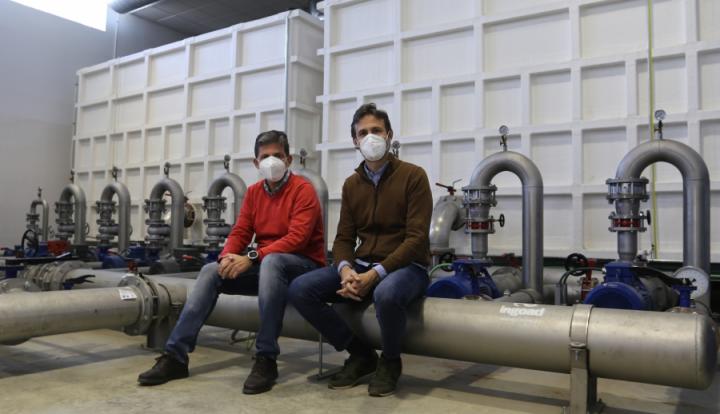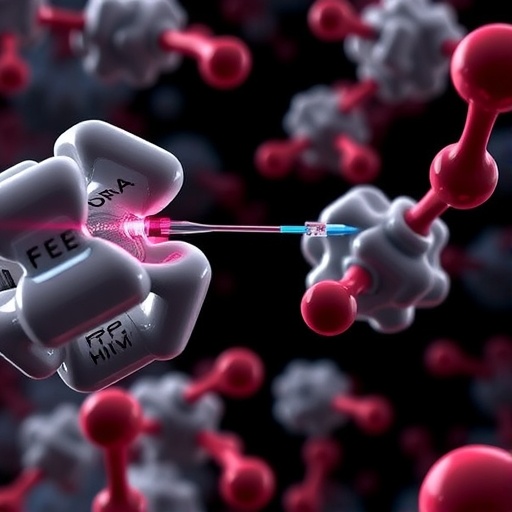
Credit: University of Cordoba
Innovation and advances in technology have facilitated agricultural activity in recent years, as traditional irrigation techniques have been supplanted by pressure-basedones, improving water efficiency but increasing energy dependence. This drives up the Agriculture sector’s energy costs, some of the highest in the European Union.
With the aim of increasing the energy efficiency of irrigation, researchers at the Hydraulics and Irrigation Group with the María de Maeztu Unit of Excellence,at the Department of Agronomy of the University of Cordoba (DAUCO), Juan Antonio Rodríguez Díaz and Jorge García Morillo, have field-tested a low-cost technology that takes advantage of the excess pressure on the grid to generate energy. This technology has made it possible, on the farm where it was installed, to forego the diesel generator that was used to power filtering equipment, fertilizer injector pumps and other devices necessary for irrigation, rendering the gridself-sufficient and operating on clean energy. The annual savings for the farmer came to €2,400, and his carbon footprint was reduced by up to 9 tons of CO2 thanks to the complete elimination of the diesel generator.
These results are achieved through the installation of hydraulic pumps that work as turbines, known as a PAT (Pump as Turbine). The water moves the impeller and generates electricity, like a small hydroelectric power plant, but one cheaper than traditional turbines for small power levels, since the production of hydraulic pumps is much greater, impacting their price.
The researchers used the EPANET hydraulic model to perform a theoretical analysis of the pressures that would be present on this network, determining the most unfavourable situations and the point where the turbine should be installed. Once the system was evaluated, it was put into operation in the field, where this kind of technology is very novel. Flow fluctuations in irrigation are very great. In order to adapt to this, a series of control elements were implemented in the design so that the turbine would always receive the optimum flow rates and adequate pressure to deliver high performance.
According to Jorge García, “another important innovation is the telemetry system, which measures and records the main hydraulic and electrical variables in real time and allows the plant to be monitored via the Web, and its performance to be analysed”.
In this way, farmers in off-grid areas with excess pressure can generate their own electricity and reduce the energy dependence of their irrigation systems, or even make their facilities self-sufficient. This is clean and cheap energy, adding value to the final product by slashing the carbon footprint, “something even more important for farmers than the economic savings related to energy”,notes Juan Antonio Rodríguez.
The agricultural community, represented by the Association of Irrigation Communities of Andalusia (FERAGUA) is very interested in the advantage of eliminating diesel generators and achieving energy autonomy through renewable energy with this technology developed as part of the European REDAWN project, of which both the University of Cordoba and FERAGUA are partners. The plant was installed at the Finca Cortijo Calonge, which belongs to the Community of Irrigators of the Genil River’s Left Bank.
###
Media Contact
Elena Lázaro Real
[email protected]
Related Journal Article
http://dx.




